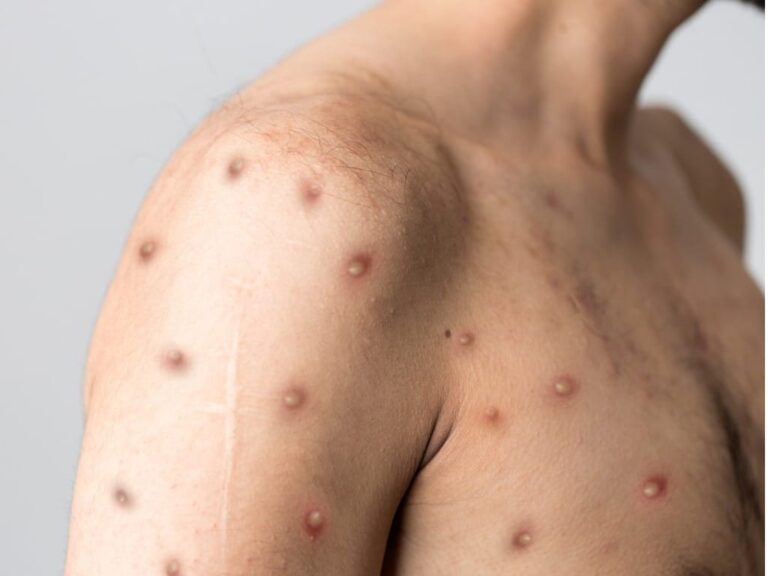Monkey Pox (Mpox) has been declared as a Public health emergency of international concern (PHEIC) under the provisions of the International Health Regulations (IHR) by World Health Organization (WHO) in August 2024. Mpox is a viral zoonotic disease caused by the monkeypox virus, a species of the genus Orthopoxvirus with two different clades first and second. MPX was first discovered in 1958 in colonies of monkeys kept for research, hence the name ‘monkeypox.’ In 1970, the 1st Human case of a 9 month old child occurred in Democratic Republic of Congo. Mpox is endemic in nearly 11 countries of Central and Western African Regions. In 2003, there was the first-ever MPXV outbreak outside the endemic countries, in the USA with around 70 confirmed or suspected cases.

Imported monkeypox infections in humans following travel have been reported in the United Kingdom, Israel, and Singapore in 2018-19 and then in the US again in 2021. In 2022–2023 a global outbreak of mpox was caused by a strain known as clade IIb. In 2022, India reported its first case of monkeypox in a 35-year-old man who arrived from the Middle East. Since then, WHO has reported a total of 30 cases in India, with the latest case detected in March 2024. Mpox has become a significant global health crisis, spreading beyond Congo to multiple countries. Clade 1b, a more transmissible strain of the virus, has caused numerous deaths in the Democratic Republic of Congo and has been detected in Sweden, Pakistan, and the Philippines. Countries like Pakistan and the Philippines have already reported mpox cases this year.

Mpox is a zoonosis, a disease that is transmitted from animals to humans, with cases often found close to tropical rainforests where there are animals that carry the virus. Evidence of monkeypox virus infection has been found in animals including squirrels, Gambian pouched rats, dormice, different species of monkeys and others. However, monkeys are not the primary reservoir for the disease. Animal-to-human transmission may occur by bite or scratch of infected animals like small mammals including rodents (rats, squirrels) and non-human primates (monkeys, apes) or through bush meat preparation.Human-to-human transmission is known to occur primarily through large respiratory droplets generally requiring a prolonged close contact. It can also be transmitted through direct contact with body fluids or lesion material, and indirect contact with lesion material, such as through contaminated clothing or linens of an infected person,intimate contact during sex with infectious skin lesions among men who have sex with men (MSM).

Certain Environmental and Social factors contributing to the emergence and spread of monkeypox are Deforestation and climate change, Global warming, Urbanization and industrialization, Cessation of smallpox vaccination etc. High Risk population includes International travelers recently in endemic countries, individuals who have engaged in anonymous sex. 99% of cases occur in the gay, bisexual and other men who have sex with men, Transgender people and sex workers. Farmers, Hunters, villagers near tropical rain forest may have indirect or low-level exposure to infected animals. While eating inadequately cooked meat and other animal products of infected animals is also a possible risk factor.
Health care providers and household members exposed to confirmed cases are often at risk. It can also spread through Placenta from mother to fetus (which can lead to congenital monkeypox) or during close contact during and after birth.Mpox causes signs and symptoms which usually begin within a week but can start 1–21 days after exposure. Symptoms typically last 2–4 weeks but may last longer in someone with a weakened immune system. In recent times, the case fatality ratio has been around 3-6%. Common symptoms of mpox are a skin rash or mucosal lesions which can last 2–4 weeks accompanied by fever, headache, muscle aches, back pain, low energy, and swollen lymph nodes. Enanthem is the first lesion on tongue and mouth. Then lead to Macules starting from face spreading to arms, legs, palms, and soles (centrifugal distribution), within 24 hours. The rash goes through a macular, papular, vesicular and pustular phase. Classic lesion is vesicopustular. A notable predilection for palm and soles is characteristic of monkey pox. Children, pregnant women and people with weak immune systems are at risk for complications from mpox. The warning signs include Pain in eye or blurring of vision, Shortness of breath, Chest pain, Difficulty in breathing, Altered consciousness, Seizure, Decrease in urine output, Poor oral intake and Lethargy.Laboratory confirmation of mpox is done by testing skin lesion material by PCR. Mpox is treated with supportive care. Principles of Management include Patient isolation, Protection of compromised skin and mucous membranes, Rehydration therapy, Nutritional support, Symptom alleviation and Monitoring and treatment of complication. Vaccination can help prevent infection for people at risk.
There is a vaccine for monkeypox recently approved by some countries. Few countries may hold smallpox vaccine products which could be considered for use according to national guidance. Mpox can be prevented by avoiding physical contact with someone who has mpox.Any rash-like illness during travel or upon return should be immediately reported to a health professional, including information about all recent travel, sexual history and smallpox immunization history. Individuals who have been identified as contacts of monkeypox cases and, therefore, are subject to health monitoring should stay at home until all scabs fall off and a new layer of skin forms, should cover lesions and wear a well-fitting mask when around other people, should avoid undertaking any travel, including international, until completion of their health monitoring period. Practice good hand hygiene after contact with infected animals or humans. As of now, there are no reported cases of mpox in India. However, India remains vigilant. Measures include sensitizing health units at airports, seaports, and ground crossings, readying testing laboratories, and preparing health facilities for detection, isolation, and management of any potential cases. WHO urges all Member States, health authorities at all levels, clinicians, health and social sector partners, and academic, research and commercial partners to respond quickly to contain local spread and, by extension, the multi-country outbreak of monkeypox.




















